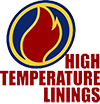HTL Responding to a Question About the 2012 Edition of 1403 as it Relates to SOP Burn Sequence Charts.
First, understand that we are not fire protection engineers, and are not qualified to evaluate or predict environments created during live fire training evolutions. However, Bill Glover has been working on live fire training structures for nearly twenty years, and has served on the National Fire Protection Association’s Technical Committee on Live Fire Training since 2002.
Question/Comment: “Regarding the Burn Sequence Chart that is now mandated by the 2012 Edition of NFPA 1403: Does leaving a small fire burning most of the day to facilitate ignition of successive evolutions effectively negate the benefits of the burn sequence chart?”
Answer: No, I don’t agree it negates the benefits, nor the intent of the burn sequence chart. If you maintain the same small fire while developing your SOPs and burn sequence charts, you will be anticipating the environments that will be developed in future training scenarios, as long as the same basic operation (size and number of evolutions) is consistently repeated. This simple process of “recording and repeating what works”, at least addresses the variables that are associated with the construction of the rooms (size, height, number of openings, finishes), and it standardizes the variables that are controllable (size of fire load, type of fuels, duration of evolutions, interval between evolutions, and the number of evolutions that are allowed for a given room). By doing this, we have addressed those variables that can be controlled, and dramatically reduced the number of unknown variables (moisture content of fuel, specific weight of fuel, quantity of water used per evolution, effects of ambient temperature, humidity and wind).
Temperature monitoring systems then play a role in recording the number of evolutions conducted, and the durations and intervals of the evolutions. The actual temperatures recorded may not be accurate, and you have to recognize that you still have no measure of the radiant energy developed. However, the empirical data collected while experimenting and developing your SOP should inherently help to control that radiant energy.
Thanks for this opportunity to answer your questions.

